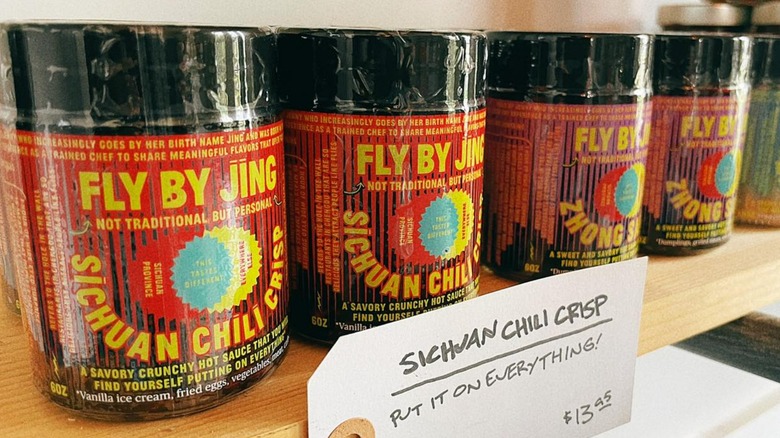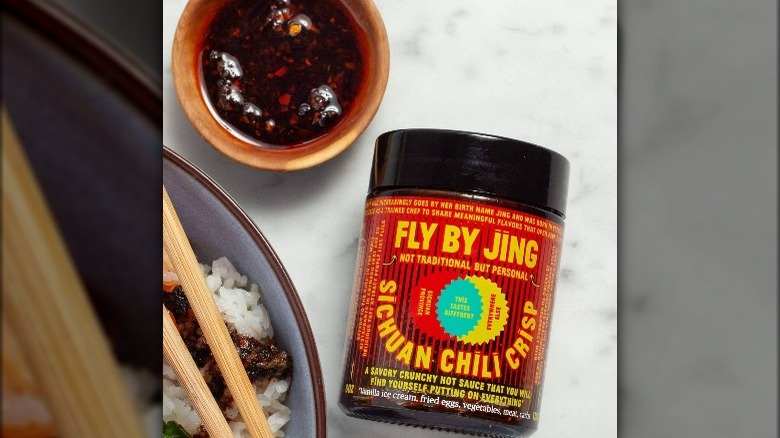Why You Might Want To Skip Costco's Trendy Hot Sauce
Costco has a wide variety of products, some of them better than others. One of the latest Costco items to go viral is the Fly by Jing Sichuan Chili Crisp hot sauce. According to the packaging, the hot sauce is vegan, gluten-free, sugar-free, and all-natural. After all, when a food is labeled natural, more people are often drawn it.
Fly by Jing describes the sauce as being "savory, hot, [and] tingly," as well as "intensely flavorful yet not off-the-charts spicy." The sauce can supposedly be used on everything and anything, from vanilla ice cream to fried eggs and veggies. Food & Wine reviewed the sauce, saying, "It elevates anything that goes with it, adding peppery notes and depth to traditional beef noodle soups, even more spiciness to steamed fish with ginger, and a punch of sweetness to stir-fried pork."
However, not quite everyone is on board with this hot sauce. Costco shoppers on Reddit, in particular, were skeptical of both the product's price and its spice.
Costco's Fly by Jing might not be worth the price
Reddit had very mixed reviews of Fly by Jing's Sichuan Chili Crisp hot sauce. Although some Redditors were fans of the sauce, others had their doubts about the price tag or the expectations-versus-reality heat level.
The sauce is listed at $15 for a single 6 oz. jar on the Fly by Jing website. Redditors noted that the sauce costs $10 at Costco, but even that seems too steep a price. Marty_Myers called the sauce a "$3 item at any Asian market."
Another person agreed, saying, "I much prefer Laoganma for 1/3 the price." However, it's worth noting that Fly by Jing's hot sauce and Laoganma are not the same thing. Epicatt explained, "Laoganma is definitely crispy, and crunchy, umami, while the Fly by Jing is more oily, much less cronch, with a spicy/chili flavor."
Still, others referred to it as the "worst chili oil ever" and as having "no flavor." Regardless of which chili crisp you buy, your results depend on how you use it. Most notably, it should be used as an amplifier of flavor, not as a dish's sole flavor.

